In a world where data floats around like cotton candy at a carnival, cloud computing audits have become the unsung heroes of digital security. They swoop in to ensure that your precious information isn’t just drifting aimlessly in the cloud like a lost balloon. With businesses relying more on cloud services, understanding how to audit these systems is crucial for safeguarding sensitive data.
Table of Contents
ToggleOverview of Cloud Computing Audit
Cloud computing audits evaluate cloud service providers’ security, compliance, and operational effectiveness. Each audit assesses the provider’s ability to protect sensitive data in a shared environment, ensuring proper risk management. Companies conducting these audits often rely on industry standards to guide their evaluations.
Auditors examine various aspects, including access controls, data privacy procedures, and incident response protocols. They focus on regulatory compliance with frameworks such as GDPR, HIPAA, and PCI DSS. Robust audits confirm that cloud providers adhere to these regulations, which mitigates potential legal repercussions.
During the audit process, firms gather evidence through documentation, interviews, and system testing. This evidence provides insights into the cloud provider’s security posture and helps identify any vulnerabilities. Assessments often uncover areas for improvement, leading to enhanced security measures.
Additionally, audit reports give organizations detailed information on the cloud service’s performance. Understanding this data helps decision-makers determine the level of trust they can place in their cloud providers. Stakeholders benefit from receiving transparent reports that highlight compliance status and potential risks.
By conducting regular cloud audits, businesses maintain control over their digital environments. Organizations should schedule audits annually or bi-annually to adapt to evolving threats. Executing this plan ensures that sensitive information remains secure and compliant in the cloud.
Importance of Cloud Computing Audit
Cloud computing audits are essential for ensuring the security and compliance of digital environments. These audits protect sensitive information from vulnerabilities in cloud services.
Compliance and Regulations
Compliance with industry regulations is a significant focus during cloud audits. Organizations must adhere to frameworks like GDPR, HIPAA, and PCI DSS to ensure their data handling practices meet legal requirements. Auditors assess cloud service providers’ processes and controls to verify adherence to these regulations. Effective audits provide clarity regarding compliance status, which assists organizations in mitigating potential legal risks. Regular evaluations of compliance help organizations align with evolving regulations, ensuring robust protection for sensitive data.
Risk Management
Risk management strategies are a critical component of cloud computing audits. Auditors identify vulnerabilities that could compromise data security within shared cloud environments. By examining access controls and incident response protocols, auditors highlight areas that require improvement. This proactive approach aids organizations in addressing security gaps promptly. Implementing recommendations from audit reports strengthens an organization’s ability to manage risks effectively. Regular audits contribute to a culture of continuous improvement, fostering resilience against emerging threats in the cloud.
Key Components of Cloud Computing Audit
Cloud computing audits consist of several critical components that ensure the integrity and security of cloud environments. Evaluating these components aids organizations in managing their digital landscapes effectively.
Data Security Assessment
Data security assessments prioritize the evaluation of access controls and data protection measures within cloud systems. Auditors focus on identifying vulnerabilities that may expose sensitive information. An in-depth examination of encryption methods provides insights into how data is safeguarded in transit and at rest. Effective audits review incident response protocols to ensure rapid action against potential breaches. Compliance with regulations like GDPR and HIPAA is crucial, as it dictates how organizations handle sensitive data. Detailed reports highlight existing gaps, allowing organizations to develop strategies for risk mitigation and data safeguarding.
Performance Monitoring
Performance monitoring evaluates the efficiency and reliability of cloud services. Regular assessments help identify latency issues and service disruptions that may affect business operations. Auditors measure responsiveness of providers to incidents, ensuring they meet service level agreements (SLAs). Tracking performance trends over time reveals potential areas for improvement, enhancing overall service delivery. Additionally, proper monitoring supports continuous compliance with industry standards, allowing organizations to adjust their cloud strategies as needed. This ongoing evaluation ensures that organizations can rely on their cloud providers to meet operational benchmarks consistently.
Best Practices for Conducting a Cloud Computing Audit
Conducting a cloud computing audit requires a strategic approach. Best practices help organizations ensure an effective evaluation of cloud services.
Establishing Audit Objectives
Defining clear objectives sets the foundation for an audit. Specific goals provide direction and clarity in the auditing process. Auditors must assess aspects such as compliance, security, and operational performance to gauge effectiveness. Organizations benefit from aligning these objectives with business needs and regulatory requirements. Establishing these priorities enables focused guidance throughout the audit. Identifying key performance indicators helps measure success and track improvement over time.
Utilizing Frameworks and Standards
Adopting recognized frameworks and standards enhances the audit process. Compliance benchmarks like ISO 27001, NIST, and CIS Controls offer structured methodologies for evaluating cloud services. These frameworks assist auditors in identifying security gaps and ensuring compliance with industry regulations. Utilizing them promotes consistency and thoroughness in evaluations. Organizations gain the advantage of following established best practices, making audits more efficient and reliable. Standards provide a comprehensive reference, guiding auditors through complex compliance landscapes.
Challenges in Cloud Computing Audit
Cloud computing audits encounter several challenges that may hinder their effectiveness. One significant challenge involves the complexity of cloud environments, which often include multiple services and providers. This complexity makes it difficult to assess all components thoroughly and can lead to gaps in security evaluations.
Another challenge relates to data residency and jurisdiction issues, as data may be stored across different locations and may be subject to varying regulations. Auditors often struggle with understanding these legal implications and how they affect compliance efforts. Effective audits must navigate these nuances to ensure proper adherence to laws like GDPR and HIPAA.
In addition, the shared responsibility model can create confusion among stakeholders. Cloud service providers and customers must understand their roles in managing security and compliance. This shared responsibility complicates the audit process as both parties must collaborate seamlessly to address vulnerabilities.
Limited visibility into cloud environments presents another obstacle. Organizations may lack access to comprehensive data regarding their cloud services, making it challenging to evaluate security measures effectively. Auditors depend on accurate data to identify potential risks.
The rapid pace of technological change further complicates audits. Cloud services evolve quickly, and new threats can emerge faster than organizations can adapt. Staying current with these changes requires ongoing education and adjustment of audit practices to maintain relevance.
Lastly, resource constraints can impact the audit process. Many organizations face budgetary limitations, leading to reduced audit frequency or scope. Such limitations can diminish the effectiveness of audits and increase the likelihood of overlooked vulnerabilities.
Conclusion
Cloud computing audits are essential for organizations navigating the complexities of digital security. By regularly evaluating cloud service providers, businesses can ensure their sensitive data remains protected while adhering to regulatory requirements. These audits not only identify vulnerabilities but also enhance operational effectiveness and compliance with industry standards.
Implementing the recommendations from audit reports fosters a proactive approach to risk management. This continuous evaluation empowers organizations to adapt their cloud strategies in response to emerging threats and evolving regulations. Ultimately, embracing robust cloud auditing practices builds trust in cloud services and strengthens an organization’s overall security posture.



